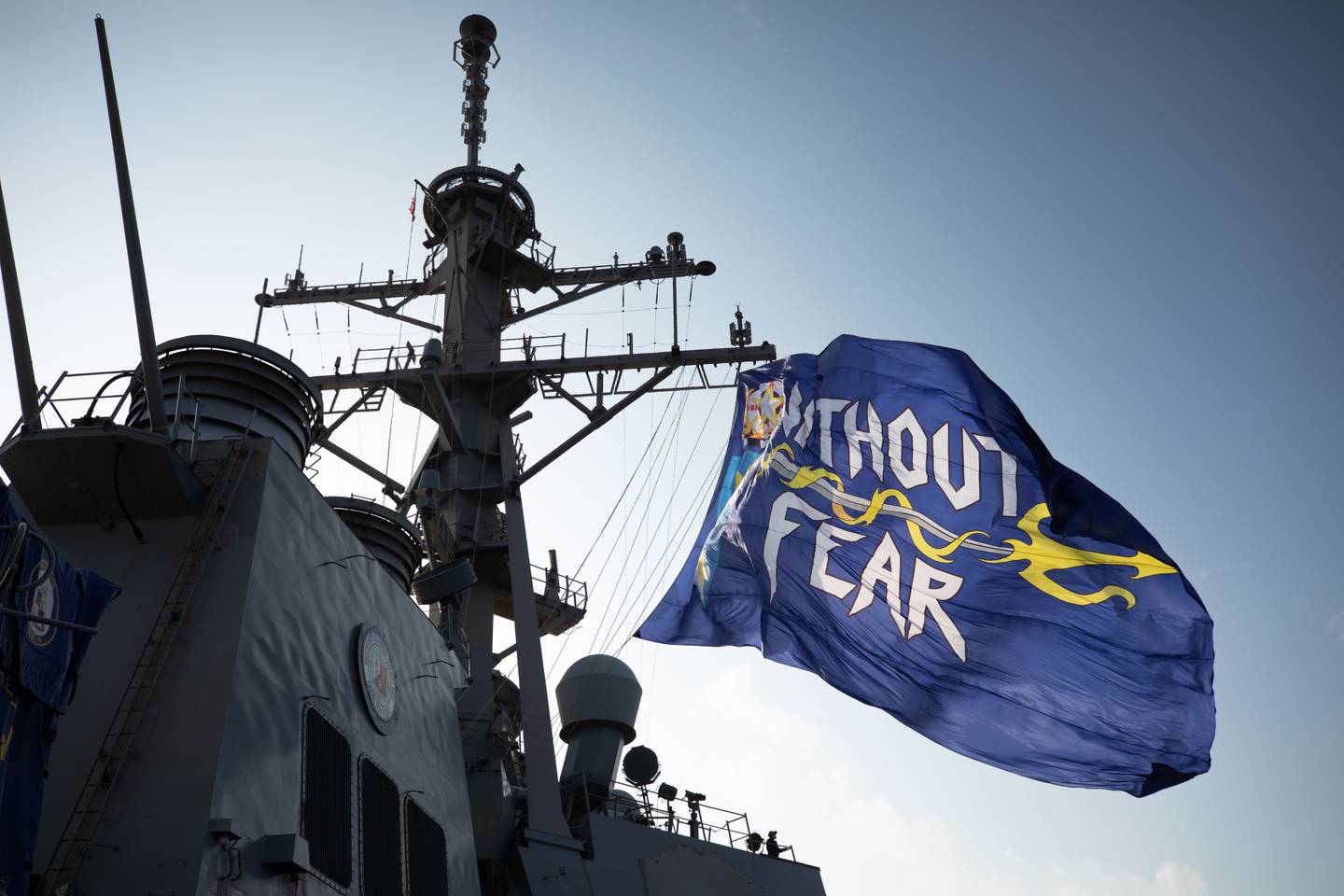
Thirteen years ago, the current head of the Navy’s surface fleet was captaining the destroyer Carney.
Even in 2010, airborne drones were a threat for which his ship had tactics and munitions at the ready, Vice Adm. Brendan McLane, now the head of Naval Surface Forces, told reporters earlier this month.
“We had a specific tactic to go after it, with a specific munition that we could shoot out our gun,” McLane said.
Fast forward to the present day and McLane has watched his former warship Carney, along with fellow destroyers Gravely, Laboon, Mason and Thomas Hudner, shoot down dozens of attack drones and missiles in the Red Sea in recent months.
Iran-backed Houthi rebels have launched attacks at commercial vessels transiting the vital economic waterway, and sometimes at Navy warships themselves. The attacks have come on a regular basis since the Oct. 7 attack on Israel by Hamas, and Israel’s subsequent operations to clear the militant group from the Gaza Strip.
The Carney and other warships have been at the spear’s tip for intercepting these attacks, shooting down scores of Houthi air attack drones in the process.
And while it remains to be seen whether last week’s U.S.-led bombing of Houthi sites in Yemen will cause the rebels to meaningfully relent, current Navy leaders and analysts agree: The volume of intercepts in the Red Sea is without modern precedent for the Navy, and the surface fleet is quickly learning from the encounters.
Those lessons are also raising questions about which warship weapons are right for such a job. While McLane declined to get into the specifics of how the Red Sea fight is impacting tactics and training during a recent interview, citing classification levels, he said the surface fleet is tracking developments “very closely.”
“We have our warfare tactics instructors involved in analyzing the data that we’re getting from the tapes on the Carney and the other ships,” he said. “And we’re looking very closely at profiles and what we have to do when it comes to radar tuning. And what we have to do when it comes to setting up our weapons system on the ship to make sure that we have … maximum defensive capability at all times.”
Those instructors are also helping to analyze data and provide updated tactics, techniques and procedures, Rear Adm. Joseph Cahill, the head of Naval Surface Force Atlantic, told reporters this month.
While destroyers have taken part in a variety of missions over the years to keep commerce flowing in the Middle East, the months-long effort to shoot down Houthi missiles and drones is new, and something the Navy hasn’t done regularly since gunfire support missions during the Vietnam War, according to Jan van Tol, a retired forward-deployed warship captain and senior fellow at the Center for Strategic and Budgetary Assessments.

